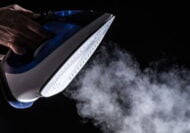Wooden cutting boards are a staple in many kitchens, adding a warm, rustic charm to your countertop. But cleaning wooden cutting board can be a little challenging. Unlike plastic or glass, wood is porous, which means it can trap bacteria if you do not take care of it properly. Don’t worry, though! Keeping your wooden cutting board clean and sanitized is not that hard, and you do not need fancy cleaning solutions. Here’s a guide to help you keep your board in tip-top shape, so it’s ready for everything from chopping veggies to carving your Sunday roast.

Why You Need to Clean and Sanitize Your Wooden Cutting Board?
First, let’s discuss why cleaning wooden cutting boards is important. Wooden cutting boards are functional and add beauty and interest to our kitchens, but they can harbor bacteria if not cleaned properly. Every time you slice into that juicy tomato or carve up some chicken, tiny bits of food can get lodged in the wood’s surface. Without regular cleaning, these bits can cause stains, smells, and, worst of all, bacteria growth. But don’t worry, you can keep your cutting board both clean and safe with correct maintenance. Although you can safely sanitize your cutting board, the best practice is to use separate boards with suitable material for different types of food. Now, let’s dive into how to wave goodbye to all those lingering bacteria on your wooden cutting board
How to Clean Your Wooden Cutting Board, Step by Step
Scrape Off the Bits
After each use, scrape off any leftover food particles with a bench scraper or the edge of a spatula. This helps remove any large chunks that could be hiding in the wood’s grain.
Wash It Down
Use warm water and a light dish soap to thoroughly clean your board. Never place your wooden cutting board in your dishwasher, which could damage it and cause a crack in it. Use a soft sponge or cloth—nothing too abrasive that could scratch the wood. Remember, you’re not scrubbing a pot here; a gentle touch will do. Make sure there is no soap residue by giving it a thorough rinse.
Dry It Immediately
This part is key! Dry your wooden board right away with a clean towel. Never leave it soaking in water, as this can cause the wood to warp or crack over time. Stand it upright or prop it against something to let it air dry completely.
How to Sanitize Your Wooden Cutting Board
Use White Vinegar
White vinegar is a natural disinfectant that’s gentle on wood. After cleaning your wooden cutting board, simply spray or wipe it down with undiluted white vinegar. Let it sit for a few minutes before wiping it dry. Vinegar not only kills bacteria but also helps neutralize any lingering odors.
Lemon and Salt Scrub
For a deeper clean, especially after working with raw meat, sprinkle coarse salt over your wooden board. Cut a lemon in half, then scrub the salt into the board using the cut side of the lemon. The salt acts as a gentle abrasive, while the lemon’s natural acidity helps sanitize and freshen the wood. After scrubbing, rinse with hot water and dry thoroughly.

Hydrogen Peroxide
If you want to give your board an extra level of sanitation, pour a little 3food grade hydrogen peroxide onto the surface. Let it sit for a few minutes before wiping it off. This will kill any lingering bacteria, making your board safe for use again.
Long-Term Maintenance and Care Tips for Your Wooden Cutting Board
- Oil It Regularly
Wood can dry out over time, leading to cracks and splits. To keep your board in great shape, rub it down with food-grade mineral oil once a month. Pour a small amount of oil onto the board and rub it in with a soft cloth, making sure to cover all surfaces. Let it soak in overnight, then wipe off any excess.
- Avoid the Dishwasher
This one’s crucial! Never, ever put your wooden cutting board in the dishwasher. The intense heat and prolonged exposure to water can ruin your board, causing it to warp, crack, or even split.
- Rotate Your Board
If your board has a smooth and a rough side, make sure to rotate it regularly. This helps prevent uneven wear and extends the life of your board.
- The Importance of Using Different Cutting Boards

It’s also worth mentioning that, to keep your food prep as safe as possible, it’s a good idea to use different cutting boards for different tasks. For instance, have one board dedicated to raw meats like chicken, beef, or pork, and another for fruits, vegetables, and bread. This simple step can drastically reduce the risk of cross-contamination, ensuring that harmful bacteria from raw meats don’t end up on your fresh produce.
Got Questions? We’ve Got Answers
What is the best way to clean a wooden cutting board?
Wash with hot, soapy water and a soft scrub brush. Rinse thoroughly and dry immediately with a clean towel.
How do you sanitize a wooden cutting board naturally?
You can use white vinegar or 3% hydrogen peroxide. Spray the board, let it sit for a few minutes, then rinse and dry well.
Can wooden cutting boards go in the dishwasher?
No. The high heat and water can warp or crack the wood. Always hand-wash and dry promptly
How often should I oil my wooden cutting board?
Apply food-grade mineral oil or board cream every 2–4 weeks or whenever the board looks dry.






Leave a Reply